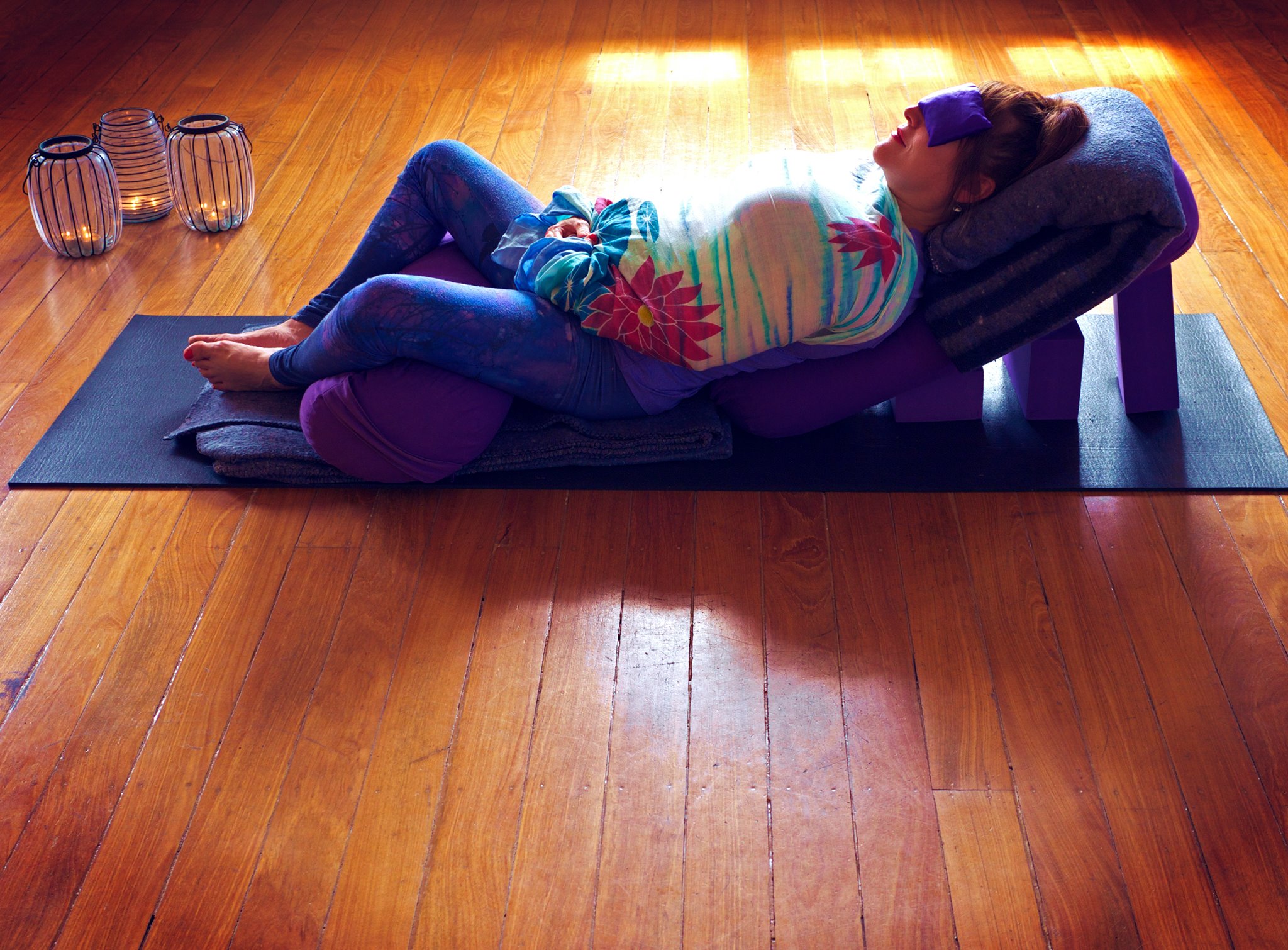

RESTorative Yoga – 10 Sept
September 10, 2017 @ 1:00 pm - 3:00 pm
| $40Sometimes you’ve just got to slow everything right down.
When your life is racing full-speed ahead, so is your mind. Restorative yoga helps provide that physical and mental balance to prevent stress and anxiety, through the use of props that allow you to hold poses longer, giving you all the benefits of deep, passive stretching.
Benefit from Full and Deep Stretches – Long, supported poses help your body to fully engage, soften, and allow the precise positioning to work its magic.
Enhance Flexibility – Restorative yoga is not a stretching class, instead you are exploring what happens when you release the tension your body habitually holds.
Find out Where You Hold Your Stress – Holding poses longer in a relaxed state gives you the opportunity to notice where you hold this tension. Once you come to this realization, the benefits come with you off the mat so in your everyday life you can help to reduce the stress and tension you allow to build up in your body.
Trim Fat and Lose Weight – A 2013 study from the University of California, San Diego compared restorative yoga with a more active stretching regime over 48 weeks, and found that women practicing yoga lost more subcutaneous fat. The yogis also lost more weight than the stretchers. One explanation may be that restorative yoga reduces cortisol levels—of which high levels are linked to increased abdominal fat.
Boost Your Immune System – slowing down consciously relaxes the mental drain on your nervous system. A regular restorative yoga practice helps to improve your immune system and makes you less of a victim in the face of all those cold and flu viruses flying around.
Balance Your Nervous System – slowing down take your body into a state that allows for renewal and rejuvenation. Your nervous system goes from fight and flight (The sympathetic nervous system is activated in cases of emergencies to mobilize energy) to rest and digest (the parasympathetic nervous system is activated when organisms are in a relaxed state). Benefits include optimizing energy flow to the organs, tissue renewal, and reduced “fight or flight” response.
Quiet Your Mind – like a calming hug for your overstimulated mind. It may look like restorative yoga is taking a nap, but once you get into them, you realize how challenging they can be. Be patient; just because your body is resting doesn’t mean your mind will automatically grow silent. Over time, you will learn how to drop into a place of stillness and be content peacefully basking in the present moment.
Recover from Illness – We all need rest, whether or not you’re recovering from muscle strain, a broken bone, a bad flu, or a chronic illness. Just because you’re not practicing more “active” asanas doesn’t mean you can’t benefit from yoga’s healing powers. Restorative yoga allows you to practice when your energy is low and your body is building strength.
Heal Emotional Pain – Just as you need to build physical strength after illness, you need to heal emotional injuries. Restorative poses offer soothing care for when you are processing the loss of a loved one or a relationship, coming to terms with a change in your life, or dealing with depression or anxiety.
Segue to a Meditation Practice – If you want to benefit from meditation and you’re not sure how to start or how to continue, Restorative yoga provides a bridge between familiar poses and, to many, the unfamiliar and often intimidating practice of meditation. You may feel vulnerable, emotional or anxious when practicing Restorative yoga—this is all part of the powerful process where you create space and let go. Wearing an eye mask, wrapping yourself in a blanket, or keeping your feet up on the wall can help ground and calm you.
